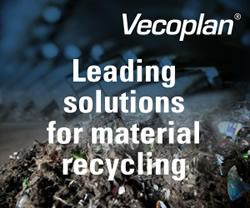Biden-Harris Administration Announces $303.5 Million Loan Guarantee to Eos Energy Enterprises to Advance Next Generation Battery Energy Storage Systems
.jpg)
As a part of the Biden-Harris Administration’s Investing in America agenda, the U.S. Department of Energy (DOE), through its Loan Programs Office (LPO), today announced the closing of a $303.5 million loan guarantee ($277.5 million of principal and $26 million of capitalized interest) to Eos Energy Enterprises, Inc. (Eos) to finance the construction of two state-of-the-art production lines that will be able to produce enough stationary batteries per year to annual electricity needs of approximately 130,000 homes. These facilities will produce “Eos Z3™,” a next-generation utility- and industrial-scale zinc-bromine battery energy storage systems (BESS) in Turtle Creek, Pennsylvania. Pending additional LPO approvals and completion of an Environmental Assessment pursuant to NEPA, two additional lines in Duquesne, Pennsylvania, may also be included as part of the loan guarantee. Today’s announcement underscores DOE’s commitment to fostering innovative energy solutions while creating good-paying, high-quality jobs across America.
“The Biden-Harris Administration has successfully implemented a new economic playbook that has boosted America’s competitive standing on the world stage as an innovation leader in the cutting-edge technologies of the future,” said U.S. Secretary of Energy Jennfier M. Granholm. “Today’s announcement will bolster the nation’s energy security while ensuring President Biden’s manufacturing boom continues to deliver for generations to come.”
All four lines of the project are expected to manufacture 8 GWh of storage capacity annually by 2027, or enough to provide electricity to over 300,000 average U.S. homes instantaneously or meet the annual electricity needs of approximately 130,000 homes if fully charged and discharged daily. The project is expected to create and maintain up to 1000 jobs including both salaried employees and a well-paid manufacturing workforce, unionized by the United Steelworkers—boosting the regional economy and adding to the 16 million jobs created since President Biden and Vice President Harris took office.
Grid-scale storage allows utilities and industrial customers to store energy when there is a surplus and use it when energy is relatively more expensive or supply is unavailable. BESS can provide numerous grid functions, including an alternative to fossil fuel electricity generation during demand spikes, being a lower-cost option during normal demand, and providing backup power. Today’s energy storage market is nascent but rapidly growing and is dominated by lithium-ion and lithium iron phosphate battery technologies, which typically serve short-term duration applications (approximately 4 hours).
Eos’s zinc-bromine Eos Z3™ batteries provide alternative battery chemistry to lithium-ion, lead-acid, sodium-sulfur, and vanadium redox chemistries for stationary battery storage applications. Eos’s technology is also specifically designed for long-duration grid-scale stationary battery storage that can assist in meeting the energy grids’ growing demand with increasing amounts of renewable energy penetration. Critically, Eos batteries are non-flammable and do not require active cooling to operate. The batteries can achieve 100% depth of discharge, do not degrade based on age, and are rated for 6,000 charge/discharge cycles before degradation. LPO financing will support manufacturing Eos’s generation battery system, the Eos Z3, which are more energy dense and cost-efficient to produce than Eos’s previous models.
Over time, Eos expects to source nearly 100% of the materials supply for the Eos Z3 battery from the United States. The product is also better insulated from market volatility and supply chain risk that challenge other battery chemistries by forgoing scarce critical minerals such as lithium, which are largely imported.
LPO works with all borrowers to create good-paying jobs with strong labor standards during construction, operations, and throughout the life of the loan including developing strong and binding Community Benefits Plans. The jobs created by the project would be based primarily in Turtle Creek, Pennsylvania, with hourly wages paid at least at the prevailing wage and competitive internship and apprenticeship salaries.
As a part of its Community Benefits Plan, Eos is engaged in ongoing community outreach efforts to economic and workforce development leaders, educational institutions, and state and local governments—including Allegheny Conference on Community Development and its economic development affiliate the Pittsburgh Regional Alliance, The Heinz Endowment and The Mon Metro Chamber of Commerce, among others—to ensure community participation in the project and to attract a strong local workforce. Eos has created a Clean Energy Careers Program to target local high schools, vocational schools, and trade schools to attract students to apprenticeship opportunities; to provide internship opportunities for 2- or 4-year college and high school students to learn skills from Eos welders, chemical engineers, and other professionals, opening up potential long-term career pathways for those students; and to raise awareness of career opportunities at Eos with local veteran groups, literacy centers, and within the nonprofit community.
Turtle Creek and nearby communities are disadvantaged communities (DACs), and the project is situated on a former Westinghouse Electric Corporation campus. The company’s current workforce is diverse across race, gender, and veteran status, and Eos is committed to growing its diverse, equitable, and inclusive team. The project’s support for disadvantaged communities and their workers aligns with the Biden-Harris Administration’s Justice40 Initiative, which sets the goal to ensure at least 40% of overall the benefits of federal clean energy investments flow to DOE-identified DACs that are marginalized by underinvestment and overburdened by pollution.
The loan guarantee is offered through LPO’s Title 17 Clean Energy Financing Program, which includes financing opportunities for innovative energy and supply chain projects like Eos’s and certain state-supported projects and projects that reinvest in existing energy infrastructure.
Across all LPO’s new and improved programs, DOE has attracted 212 active applications for projects across the country totaling over $324.35 billion in requested loans and loan guarantees, as of the end of November. For more information about Eos and its next generation battery energy storage systems, read the conditional commitment blog post and visit LPO’s portfolio project page.
Comments (0)
This post does not have any comments. Be the first to leave a comment below.
Featured Product

